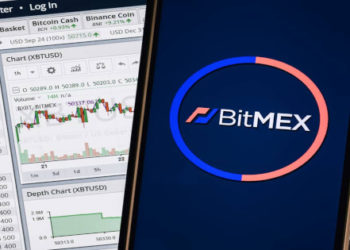Darius Baruo
Nov 01, 2024 07:19
Taiko tackles the challenges of rollup decentralization by enhancing L1 sequenced blocks, introducing ‘based rollups’ to strengthen Ethereum’s economic security.
As the blockchain ecosystem continues to evolve, the rollup landscape is facing significant challenges, particularly in terms of sequencer centralization. In response, Taiko, a prominent player in this space, is pioneering solutions through its ‘based rollups’ initiative. This innovative approach aims to decentralize the rollup process by enhancing Layer 1 (L1) sequenced blocks, according to taiko.mirror.xyz.
Understanding Rollup Economics
Rollups are critical in scaling Ethereum as they create their own economic models. Centralized rollups have unique transaction order mechanisms such as First Come First Serve (FCFS), Priority Gas Auction (PGA), and Timeboost. These mechanisms present various economic opportunities for rollup operators. However, the centralized sequencer’s exclusive rights to order transactions allow it to capture maximum extractable value (MEV) and collect all priority fees, concentrating power within a single entity.
The ‘Based Rollup’ Perspective
Taiko’s ‘based rollups’ represent a shift towards a more decentralized and permissionless block-building approach. Although initially thought to be incapable of generating MEV, ‘based rollups’ redistribute MEV opportunities by allowing anyone to propose a block, thus decentralizing the process. This model requires proposers to compete on priority fees to secure inclusion in the L1 block, ensuring that the proposer willing to sacrifice the most profit prevails.
Taiko’s Unique Economic Cycle
Taiko operates with a distinctive economic model that involves a multi-proof structure. Users on Taiko’s Layer 2 (L2) network pay fees divided into a priority tip and a base fee. The tip rewards the L2 block proposer, while the base fee supports the Taiko DAO Treasury. Block proposers must also cover L1 and prover fees. Taiko’s unique fee distribution and block-building mechanism aim to encourage decentralization and community involvement.
Enhancing Profitability
Profitability within ‘based rollups’ is influenced by L1 gas prices and L2 gas usage. Taiko’s proposers generate revenue through transaction tips, with profitability calculated based on gas prices, base fees, and L1 costs. Moreover, the upcoming protocol upgrade on November 15th aims to address current challenges with base fee calculations, potentially increasing revenue opportunities for operators and proposers.
Future Prospects and Additional Revenue Streams
Looking ahead, Taiko plans to introduce preconfirmations, which promise to enhance user experience and proposer profitability. Preconfirmations enable batch proposing and instant transaction confirmations, albeit at a cost of slightly reduced liveness. Moreover, Taiko is exploring additional revenue streams, such as selling sequencing rights through an in-protocol market and outsourcing block-building structures to extract more value.
By innovating with ‘based rollups,’ Taiko aims to forge a path towards a more decentralized and economically secure blockchain ecosystem. As the industry continues to explore and experiment with these concepts, the potential for new revenue models and enhanced decentralization remains promising.
Image source: Shutterstock
Credit: Source link












































